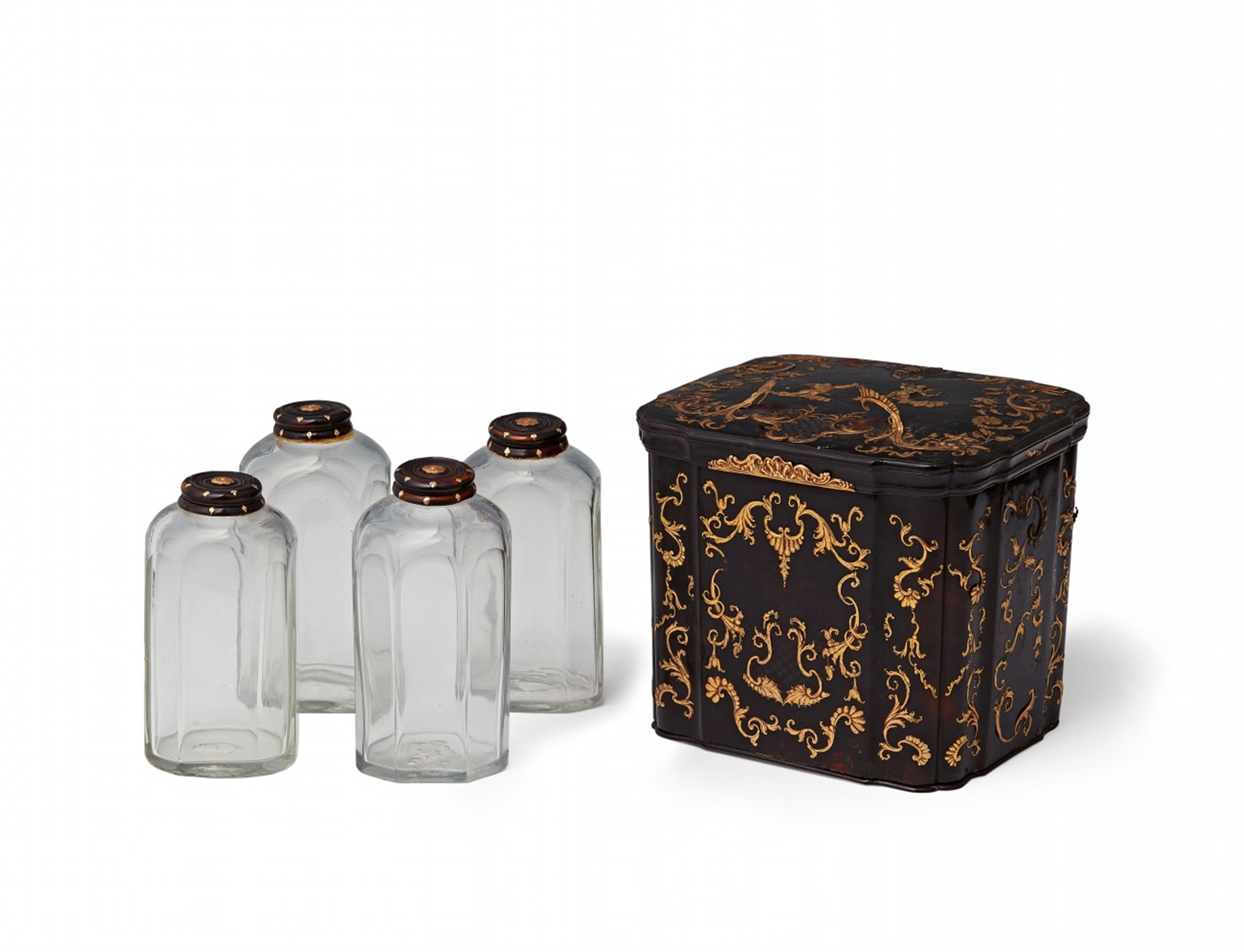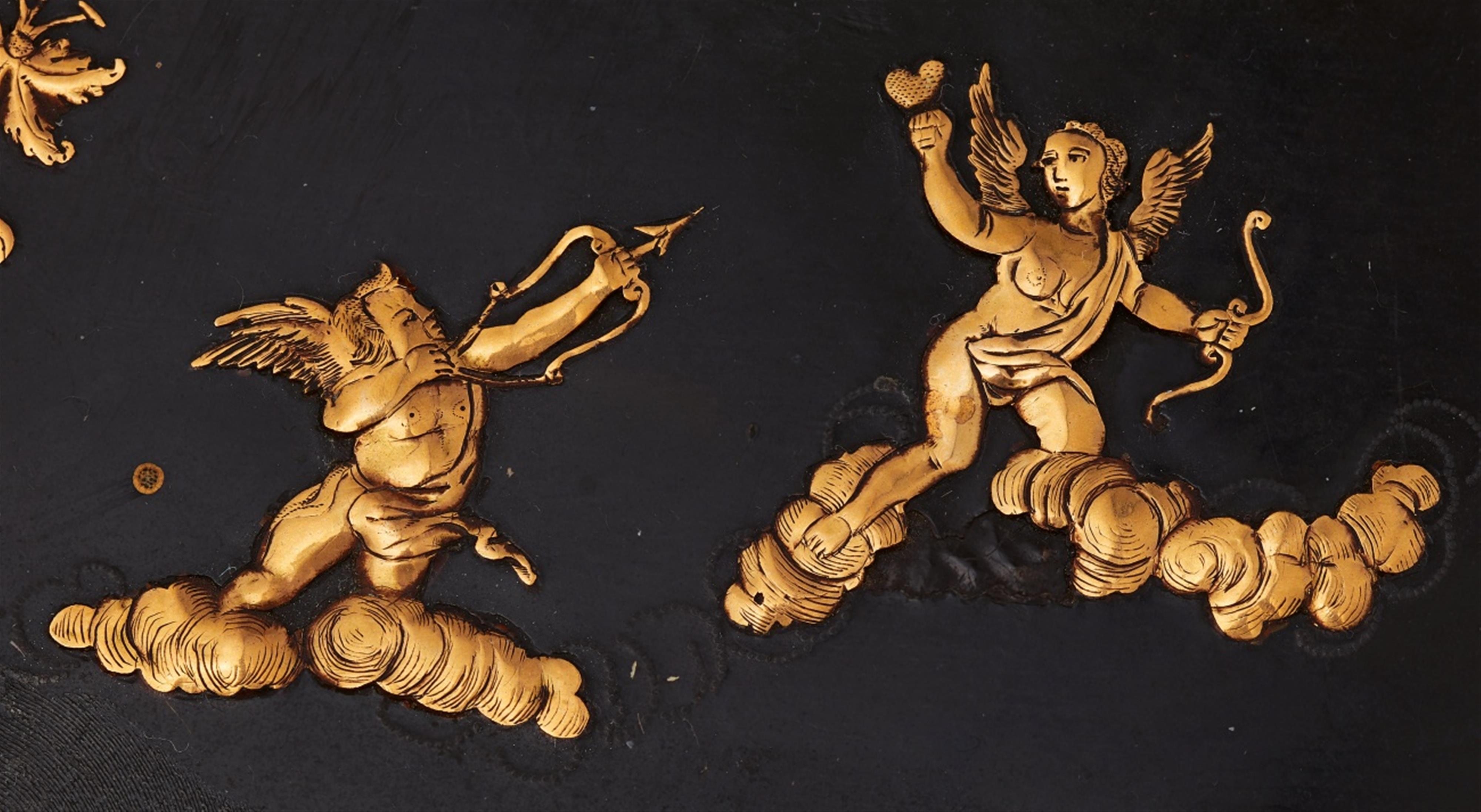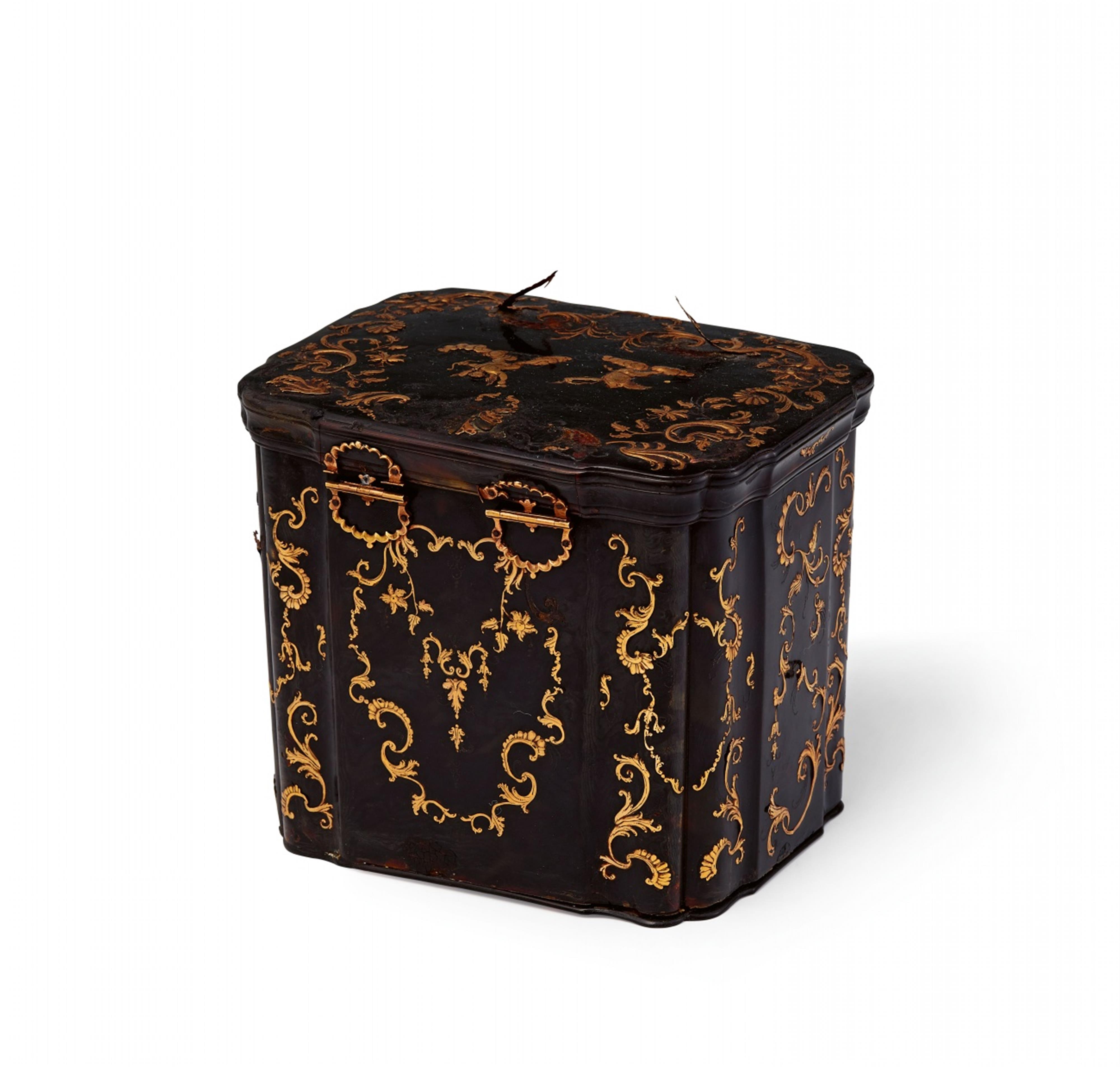A rare Italian tortoiseshell liquor set
Four octagonal glass bottles in a tortoiseshell coffer with silver and gold piqué inlays. The lid with an allegorical motif of an amoretti shooting through a heart held by a winged female figure, five faces decorated with engraved gold tendrils, silver po Some inlays loose or protruding, some losses, remnants of older glued repairs. H 13, W 15.7, D 12.8 cm, H of bottles ca. 11.5 cm.
Attributed to Naples, third quarter 18th C.
The technique of inlaying tortoiseshell panels with precious metals is thought to have been developed in Naples in the 16th century and was developed and perfected there throughout the 17th. The Bourbon court as well as visitors coming to Naples on the Grand Tour created a large market in the early 18th century for snuffboxes and small liquor sets in the technique.
The shells of the exotic hawksbill sea turtle (Eretmochelys imbricata) arrived in Naples in their uncut state, measuring up to a meter in length. There they were first softened in boiling water and olive oil and then pressed into the desired form. Goldsmiths would then heat the shells to even higher temperatures and decorate them with inlays of silver and gold which originally were not glued but held in place by the shrinkage that occurred during the cooling process. Diderot and d´Alembert's "Encyclopédie ou Dictionnaire raisonné des sciences, des arts et des métiers" illustrates all the tools and processes required to create "Point d'or", a technique in which tiny holes in the tortoiseshell were filled with molten gold or silver; "Coulé", in which the metal is used to fill linear engravings; "Incrusté", the creation of inlays with other materials such as mother-of-pearl or sheet gold, and "Posé", a combination of all techniques.






